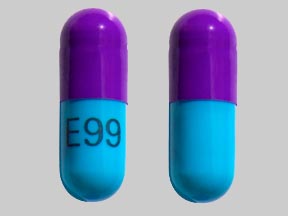Cefdinir Dosage
Medically reviewed by Drugs.com. Last updated on Aug 4, 2023.
Applies to the following strengths: 300 mg; 125 mg/5 mL; 250 mg/5 mL
Usual Adult Dose for:
Usual Pediatric Dose for:
Additional dosage information:
Usual Adult Dose for Pneumonia
Community acquired: 300 mg orally every 12 hours for 10 to 14 days
Usual Adult Dose for Bronchitis
Acute exacerbations of chronic bronchitis: 300 mg orally every 12 hours for 5 to 10 days or 600 mg orally every 24 hours for 10 days
Usual Adult Dose for Sinusitis
Acute maxillary sinusitis: 300 mg orally every 12 hours or 600 mg orally every 24 hours for 10 days
Usual Adult Dose for Skin or Soft Tissue Infection
Uncomplicated: 300 mg orally every 12 hours for 10 days
Usual Adult Dose for Tonsillitis/Pharyngitis
300 mg orally every 12 hours for 5 to 10 days or 600 mg orally every 24 hours for 10 days
Usual Pediatric Dose for Pneumonia
Community acquired:
13 years or older: 300 mg orally every 12 hours for 10 to 14 days
Usual Pediatric Dose for Bronchitis
Acute exacerbations of chronic bronchitis:
13 years or older: 300 mg orally every 12 hours for 5 to 10 days or 600 mg orally every 24 hours for 10 days
Usual Pediatric Dose for Otitis Media
Acute bacterial otitis media:
6 months through 12 years: 7 mg/kg orally every 12 hours for 5 to 10 days or 14 mg/kg orally every 24 hours for 10 days
Maximum dose: 600 mg/day
Usual Pediatric Dose for Tonsillitis/Pharyngitis
6 months through 12 years: 7 mg/kg orally every 12 hours for 5 to 10 days or 14 mg/kg orally every 24 hours for 10 days
Maximum dose: 600 mg/day
13 years or older: 300 mg orally every 12 hours for 5 to 10 days or 600 mg orally every 24 hours for 10 days
Usual Pediatric Dose for Sinusitis
Acute maxillary sinusitis:
6 months through 12 years: 7 mg/kg orally every 12 hours or 14 mg/kg orally every 24 hours for 10 days
Maximum dose: 600 mg/day
13 years or older: 300 mg orally every 12 hours or 600 mg orally every 24 hours for 10 days
Usual Pediatric Dose for Skin and Structure Infection
Uncomplicated:
6 months through 12 years: 7 mg/kg orally every 12 hours for 10 days
Maximum dose: 600 mg/day
13 years or older: 300 mg orally every 12 hours for 10 days
Renal Dose Adjustments
Adults:
CrCl less than 30 mL/min: 300 mg orally every 24 hours
Pediatric patients:
CrCl less than 30 mL/min: 7 mg/kg orally every 24 hours
Maximum dose: 300 mg/day
Liver Dose Adjustments
Data not available
Precautions
Serious and occasionally fatal hypersensitivity reactions have been reported with antibiotics. The drug should be discontinued immediately at the first appearance of a skin rash or other signs of hypersensitivity. Severe, acute hypersensitivity reactions may require treatment with epinephrine and other resuscitative measures including oxygen, intravenous fluids, antihistamines, corticosteroids, cardiovascular support and airway management as clinically indicated.
Some cephalosporins have been associated with seizures in renally impaired patients with elevated serum concentrations. The drug should be discontinued if seizures occur. Renal function should be monitored, especially in elderly patients.
Cephalosporins may be associated with a fall in prothrombin activity. Risk factors include renal or hepatic impairment, poor nutritional state, a protracted course of antimicrobial therapy, and chronic anticoagulation therapy. Prothrombin times should be monitored and vitamin K therapy initiated if indicated.
Clostridium difficile associated diarrhea (CDAD) has been reported with almost all antibiotics and may potentially be life-threatening. Therefore, it is important to consider this diagnosis in patients who present with diarrhea following cephalosporin therapy. Mild cases generally improve with discontinuation of the drug, while severe cases may require supportive therapy and treatment with an antimicrobial agent effective against C difficile. Hypertoxin producing strains of C difficile cause increased morbidity and mortality; these infections can be resistant to antimicrobial treatment and may necessitate colectomy.
Cephalosporins have been known to occasionally induce a positive direct Coombs' test and a false-positive urine glucose test (with Clinitest(R), Benedict's or Fehling's solution). A false-positive reaction for ketones in the urine may occur with tests using nitroprusside.
Patients with diabetes should be advised that cefdinir oral suspension contains 2.86 g sucrose per teaspoon.
To reduce the risk of development of drug resistant organisms, antibiotics should only be used to treat or prevent proven or suspected infections caused by bacteria. Culture and susceptibility information should be considered when selecting treatment or, if no data are available, local epidemiology and susceptibility patterns may be considered when selecting empiric therapy. Patients should be advised to avoid missing doses and to complete the entire course of therapy.
Dialysis
Hemodialysis: 300 mg or 7 mg/kg orally given upon completion of dialysis and every 48 hours thereafter
Other Comments
May be taken without regard to meals; however, separate doses by at least 2 hours from aluminum-, iron-, or magnesium-containing products. However, the suspension may be given with iron-fortified infant formula.
The oral suspension may be stored at room temperature and should be shaken well before use.
The reconstituted suspension should be discarded after 10 days.
Frequently asked questions
More about cefdinir
- Check interactions
- Compare alternatives
- Pricing & coupons
- Reviews (386)
- Drug images
- Side effects
- Patient tips
- During pregnancy
- Support group
- Drug class: third generation cephalosporins
- Breastfeeding
- En español
Patient resources
Other brands
Professional resources
Other brands
Related treatment guides
Further information
Always consult your healthcare provider to ensure the information displayed on this page applies to your personal circumstances.


